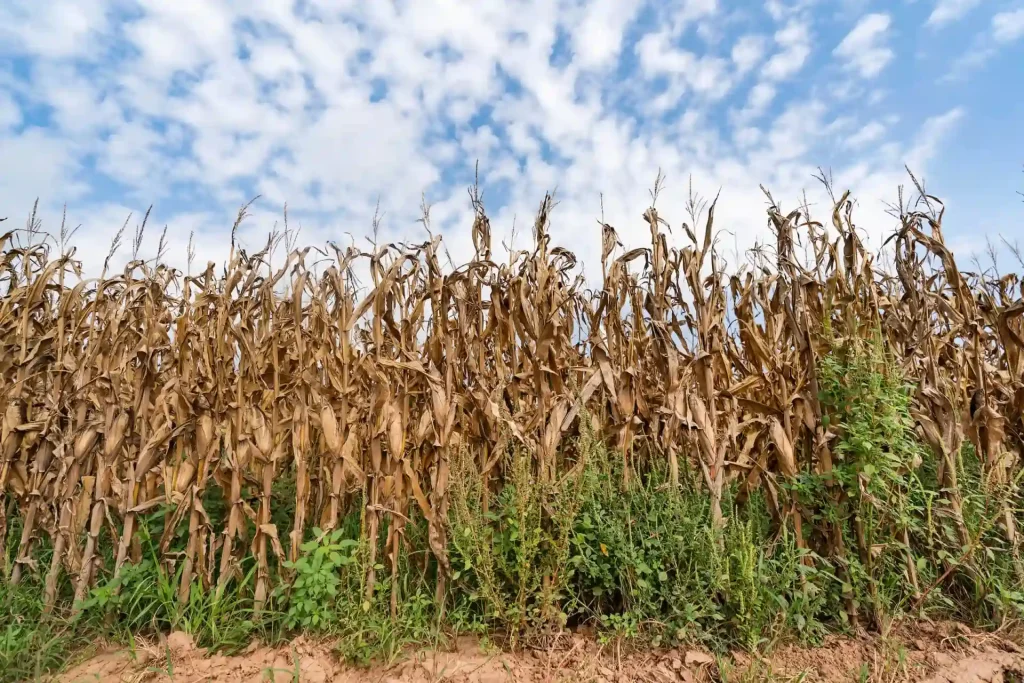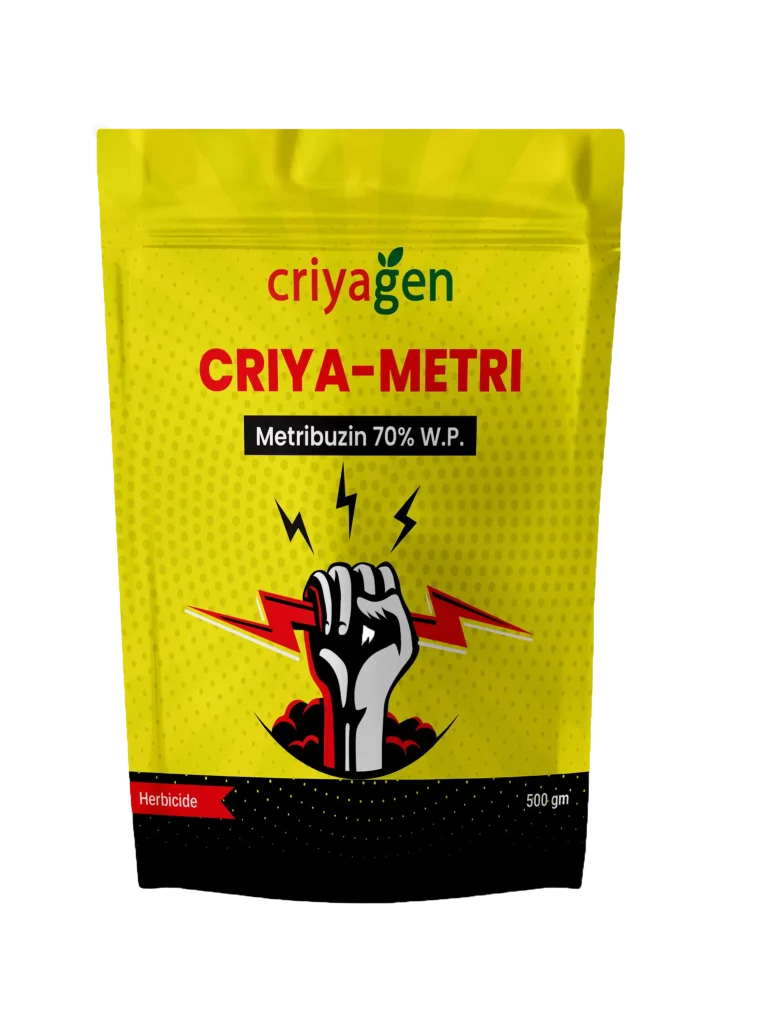Every farmer knows the struggle of battling weeds. They compete with crops for essential nutrients, water, and sunlight, making it harder for your plants to grow strong and healthy. Traditional herbicides might control some weeds, but what about those stubborn ones that just won’t go away? This is where Metribuzin 70% WP makes a difference. It’s not just another herbicide—it targets a wide range of weeds, including those resistant to other treatments.

But how do you use it? Is it safe? How does it work? In this post, we’ll answer all these questions and more. In this post, we will help you with everything you need to know about Metribuzin 70% WP.
What is Metribuzin 70% WP?
Active Ingredients: Metribuzin 70% WP contains 70% Metribuzin as its active ingredient, with the remaining 30% consisting of other ingredients. This formulation comes as a wettable powder (WP), which is mixed with water for application. Metribuzin, a member of the Triazinone group, is known for its systemic and contact action, ensuring broad-spectrum weed control.
Mode of Action
Metribuzin 70% WP acts by inhibiting the Photosystem II of photosynthesis, which disrupts the electron transfer within the plant cells. This disruption halts the production of essential proteins required for plant growth, leading to the eventual death of the targeted weeds. The herbicide is absorbed by the roots and leaves and is translocated through the plant’s xylem, ensuring effective control of both grasses and broadleaf weeds.
How to Use Metribuzin 70% WP
Dosage: The dosage of Metribuzin 70% WP varies depending on the crop and the type of weeds you’re targeting. For general weed control, use the recommended dosage as per the product label and mix it with the appropriate amount of water. Apply uniformly across the crop using a sprayer to ensure full coverage.
Specific dosage recommendations include:
- Sugarcane: 400 ml per acre
- Potato: 300 ml per acre
- Tomato: 300 ml per acre
- Soybean: 300 ml per acre
- Wheat: 100 ml per acre
Spot Spraying: For areas with heavy weed infestations, spot spraying can be used to focus on problem areas. This helps in managing weed populations effectively without wasting herbicide on less-affected areas. Ensure thorough coverage of the affected spots.
Crop-Specific Instructions
- Sugarcane:
- Target Weeds: Cyperus rotundus, Cynodon dactylon, Chenopodium album, and others.
- Dosage: 400 ml per acre.
- Potato:
- Target Weeds: Chenopodium album, Fumaria parviflora, Parthenium hysterophorus.
- Dosage: 300 ml per acre.
- Tomato:
- Target Weeds: Trianthema portulacastrum, Amaranthus viridis, Digera arvensis.
- Dosage: 300 ml per acre.
- Soybean:
- Target Weeds: Digitaria spp., Cyperus esculentus.
- Dosage: 300 ml per acre.
- Wheat:
- Target Weeds: Phalaris minor, Chenopodium album.
- Dosage: 100 ml per acre.
Safety and Toxicity of Metribuzin 70% WP
Signs of Toxicity
While using Metribuzin 70% WP, it’s crucial to recognise early symptoms of exposure, such as headaches, dizziness, nausea, and skin irritation. Severe exposure may lead to respiratory distress. If you experience any of these symptoms, seek medical attention immediately.
Protective Measures
To ensure safety during application, always wear protective clothing, including gloves, masks, and goggles. Avoid direct contact with skin and eyes, and do not inhale the spray mist. After handling the product, wash thoroughly with soap and water, and change your clothes.
Environmental Impact
Metribuzin 70% WP can be harmful to aquatic life and should not be allowed to contaminate water bodies. Always follow label instructions to reduce the environmental footprint.
Biodegradability
Metribuzin is moderately persistent in soil and water. Proper application and disposal are essential to minimise its environmental impact.
Impact on Non-target Species
Though effective against weeds, Metribuzin can affect non-target plants and animals if not applied correctly. It’s important to apply the herbicide following guidelines to protect beneficial organisms and non-target plants.
Is It Safe to Use?
Metribuzin 70% WP has undergone safety studies and regulatory assessments that confirm its safety when used as directed. By following the recommended precautions, it poses minimal risk to users and the environment. Always adhere to safety guidelines for the best results.
Where to Buy Metribuzin 70% WP?
Are you wondering where to buy it ?
If you’re searching for a reliable source, consider Criyagen’s Criya-Metri. This high-quality Metribuzin 70% WP herbicide ensures effective weed control for your crops. With its broad-spectrum action and selective nature, Criya-Metri stands as a reliable option for farmers.
Criya-Metri powered with Metribuzin 70% WP is available at AgriApp.

Download AgriApp from the PlayStore and get a ₹100 OFF on your first purchase.
Most importantly!!!
Always consult with an expert before applying chemicals. Get free crop advisory service via AgriApp. Dial at +91 9108047688.